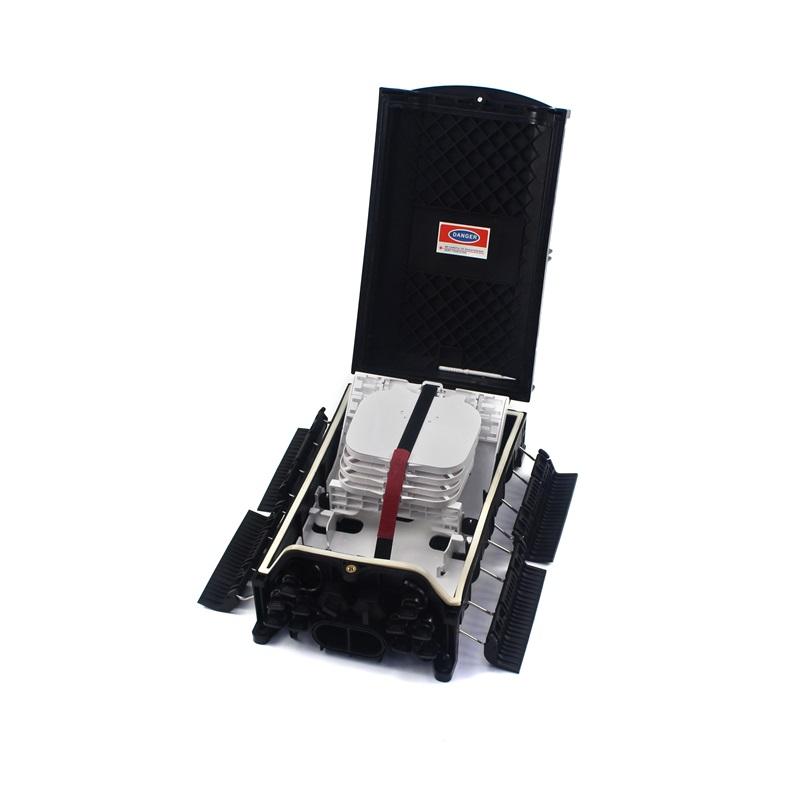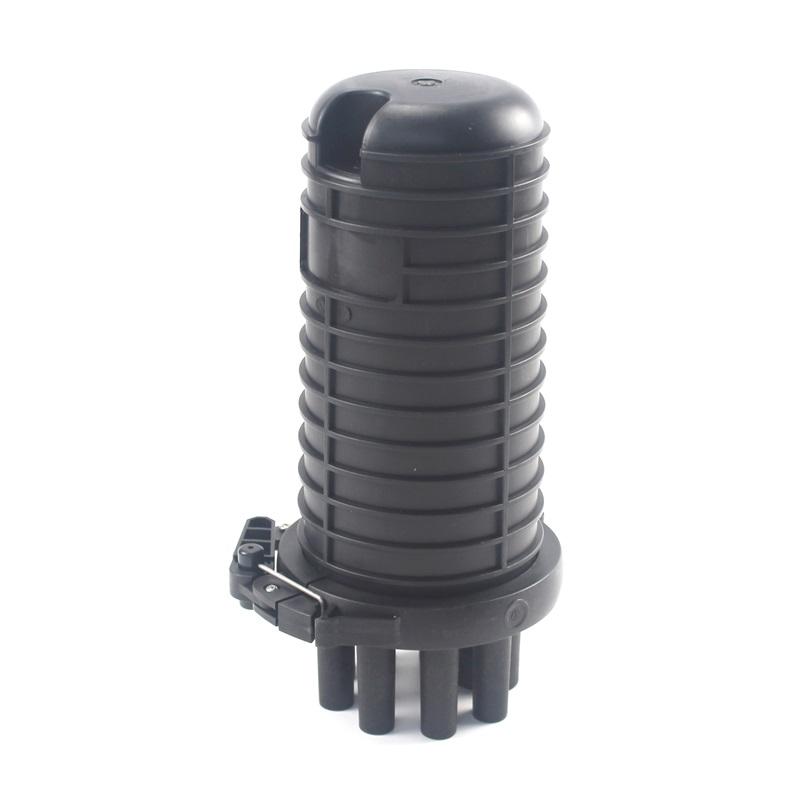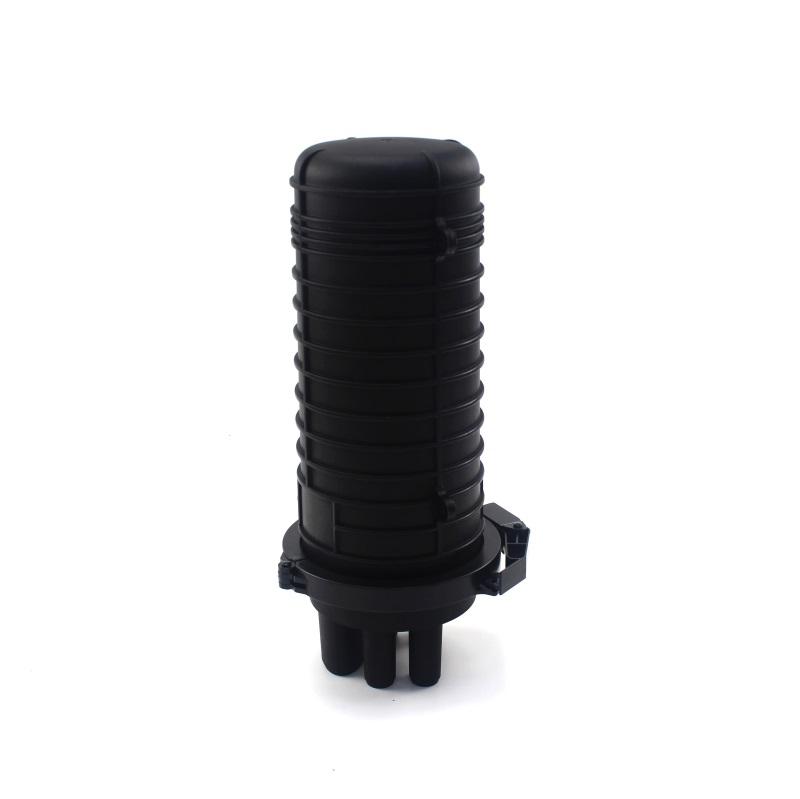
The Vertical Splice Closure enhances fiber optic installations by addressing common challenges. Its compact design and ease of installation have driven an increase in adoption rates over the past five years. This growth aligns with the rising demand for fiber-to-the-home (FTTH) deployments and expanding 5G networks.
Key Takeaways
- The Vertical Splice Closure protects fiber optic cables from water damage, ensuring better performance and longer life.
- Its user-friendly design allows for quick and easy installation, reducing labor costs and project time significantly.
- Regular maintenance, including inspections and cleaning, is essential to keep the closure functioning well and to prevent unexpected failures.
Water Ingress Prevention

Water ingress poses a significant threat to the performance and longevity of fiber optic installations. Moisture can lead to signal degradation and even complete cable failure. Therefore, effective sealing is crucial in protecting fiber optic cables from water damage.
Importance of Sealing
Sealing plays a vital role in preventing water ingress. The plastic sheath of fiber optic cables offers limited protection against moisture. To combat this, additional barriers, such as aluminum foil or polyethylene laminated films, are often employed. These materials help create a robust defense against water penetration.
Common sources of water ingress include:
- Damage to the cable sheath, allowing water to enter.
- Humid conditions that cause water to diffuse into the cable.
- Microcracks in the optical fiber exacerbated by water.
Moisture accumulation inside cables can increase fiber attenuation, leading to signal loss. Heavy rainfall can submerge cable facilities, resulting in insulation failure. Thus, ensuring a reliable seal is essential for maintaining optimal performance.
Design Features
The design of the Vertical Splice Closure incorporates advanced sealing technologies that effectively prevent water ingress. These closures utilize elastic rubber seal rings that provide excellent sealing capabilities. Additionally, some models feature mechanical sealing structures filled with silicone rubber, enhancing their ability to withstand environmental challenges.
Key design features that contribute to water resistance include:
| Feature | Description |
|---|---|
| Sealing Structure | Heat shrinkable sealing structure |
| Body Material | High-quality industrial plastic |
| Protection Level | IP68 (high water and dust resistance) |
The IP68 rating ensures that the closure is completely dust-tight and can withstand prolonged immersion in water. This level of protection is critical for installations in harsh outdoor environments.
In comparison to traditional horizontal closures, the Vertical Splice Closure offers superior sealing capabilities. The table below highlights the differences:
| Feature | Vertical Splice Closure | Horizontal Splice Closure |
|---|---|---|
| Design | Excellent engineering plastics, multiple port options | Flat or cylindrical case, multiple splice trays |
| Sealing Method | Requires high-level seals and waterproof technology | Needs to be waterproof and dustproof |
| Applications | Suitable for aerial and direct buried applications | Commonly mounted in aerials or buried underground |
| Environmental Protection | Protects against insects and dirt in underground settings | Must be held firmly to avoid damage from weather and wind |
The Vertical Splice Closure not only protects against water ingress but also enhances the overall reliability of fiber optic networks. By utilizing advanced sealing technologies and robust materials, it sets a new standard for performance in the industry.
Simplified Installation Process

The installation process for the Vertical Splice Closure is designed to be straightforward and efficient. This user-friendly approach allows technicians to complete installations quickly and effectively, minimizing potential errors.
User-Friendly Design
The Vertical Splice Closure incorporates several design elements that enhance usability. These features simplify the installation process and make maintenance easier. Here are some key aspects:
| Feature | Description |
|---|---|
| Base and Dome Sealing | Sealed with a clamp and O-ring system for a secure fit and easy management. |
| Sealing Types | Mechanical and heat-shrinkable seals facilitate easy installation and reentry. |
| Durability | The closure is compact, waterproof, and UV-resistant, ensuring it withstands harsh conditions. |
| Compatibility | It works with various cable types, including single fiber and ribbon. |
| Versatility | Suitable for aerial, buried, manhole, and other applications. |
| Ease of Use | Technicians can open and reuse the closure without special tools for straightforward maintenance. |
| Corrosion Resistance | Non-corrosive steel is used for all metallic parts, ensuring longevity. |
These features contribute to a seamless installation experience. Technicians can follow a series of steps to install the closure effectively:
- Fiber Cable Sheath Preparation: Expose the rip cord, mark the location, and remove the outer sheath.
- Bonding and Grounding Hardware Installation: Slide the cable clamp over the sheath and secure the bond plate.
- Assembly of Cables to Closure: Install cables to the end plate and secure them.
- Fiber Optic Splice Closure Cover Installation: Clean grooves, slide the assembly into the cover, and secure it.
- Closure Mounting: Use the mounting bracket kit to mount the closure.
- Reentry: Clean the closure surface and reassemble.
This structured approach ensures that technicians can complete installations efficiently, reducing the likelihood of mistakes.
Time Efficiency
Time efficiency is a critical factor in fiber optic deployments. The Vertical Splice Closure significantly reduces installation time compared to traditional methods. Faster installation translates to lower labor costs and quicker project completion.
For instance, using advanced techniques like fiber blowing can decrease installation time by up to 66%. In a controlled experiment, technicians installed 100 kilometers of fiber optic cables in just 10 days using fiber blowing, compared to 30 days with traditional methods. This reduction in time led to a 40% decrease in labor costs.
Overall, the Vertical Splice Closure not only simplifies the installation process but also enhances project efficiency. By minimizing installation time, it contributes to cost savings and improved project timelines.
Maintenance and Accessibility
Easy Access for Repairs
The design of the Vertical Splice Closure prioritizes accessibility, which significantly enhances repair efficiency. Technicians can quickly access the closure due to features like re-enterable housings and user-friendly connectors. These elements simplify fieldwork, allowing for faster repairs.
Regular inspections are essential for maintaining optimal performance. Technicians should conduct these inspections every six months to identify potential issues such as wear, cracks, or corrosion. This proactive approach helps prevent unexpected failures. The following maintenance procedures are recommended:
| Maintenance Procedure | Description |
|---|---|
| Regular Inspections | Visual checks for physical damage, pollutants, or moisture to detect early signs of wear. |
| Proper Sealing and Waterproofing | Use of high-quality materials to protect against environmental threats. |
| Cleaning and Replacing Worn Components | Regular cleaning of splice trays and fibers to maintain functionality. |
These procedures ensure that the Vertical Splice Closure remains in excellent condition, minimizing downtime and repair costs.
Long-Term Durability
Long-term durability is a critical factor for fiber optic installations. The Vertical Splice Closure is designed to withstand harsh environmental conditions. Its robust construction provides mechanical protection and chemical resistance, making it suitable for various applications.
Industry feedback highlights the importance of closures that integrate well with complex network architectures. This integration supports high-speed data transmission, which is increasingly vital in today’s digital landscape. The following factors contribute to the long-term reliability of the Vertical Splice Closure:
| Key Factors | Description |
|---|---|
| Mechanical Protection | Industrial end-users prioritize closures that offer superior mechanical protection. |
| Chemical Resistance | There is a demand for closures that can withstand various chemical exposures. |
| Ease of Integration | Closures must integrate well with complex network architectures, which is crucial for reliability. |
| Support for High-Speed Data | The rise of Industry 4.0 increases the need for closures that support high-speed data transmission. |
| Remote Monitoring and Maintenance | Demand for predictive maintenance solutions is growing, indicating a focus on long-term reliability. |
By focusing on these aspects, the Vertical Splice Closure ensures longevity and reliability in fiber optic networks.
The Vertical Splice Closure resolves critical issues in fiber optic installations. It enhances protection against environmental factors and ensures uninterrupted connectivity. This closure maintains the integrity of fiber optic splices, raising overall reliability standards.
Future trends in fiber optic closure technology include:
| Trend/Innovation | Description |
|---|---|
| Advancements in Sealing | Enhanced sealing technologies are being developed to improve closure performance and reliability. |
| Installation Ease | Innovations are making installations simpler and more efficient for technicians. |
| Flexibility in Fiber Capacity | New designs are allowing for greater adaptability in fiber configurations. |
| IoT-Enabled Smart Closures | Integration of IoT for real-time monitoring and diagnostics is expected to enhance maintenance. |
| Sustainable Materials | A focus on using recyclable and environmentally friendly materials in closure designs. |
| AI and Automation | Adoption of AI for predictive analytics and automated processes is improving reliability. |
As the demand for fault-free transmission channels increases, the Vertical Splice Closure sets a new standard for reliability and efficiency in the industry.
FAQ
What is a Vertical Splice Closure?
A Vertical Splice Closure connects fiber optic cables, protecting splices from environmental factors while ensuring reliable signal transmission.
How does the Vertical Splice Closure prevent water ingress?
The closure uses advanced sealing technologies, including rubber seal rings and an IP68 rating, to block water and dust effectively.
What maintenance is required for the Vertical Splice Closure?
Regular inspections every six months help identify wear or damage. Cleaning and replacing worn components ensure optimal performance and longevity.
Post time: Sep-24-2025
